Colorado is a land of peaks and plateaus, of rivers that carve through stone and skies that seem to go on forever. Nicknamed the Centennial State for its 1876 admission to the Union, exactly 100 years after America’s founding, Colorado embodies the spirit of the West—wild, free, and full of contrasts.
At its heart stands the Rocky Mountains, whose snowcapped summits shape not only the geography but the identity of the state. From the high-alpine passes of the San Juans to the vast meadows of Rocky Mountain National Park, these ranges define both adventure and solitude. Here, hikers, skiers, and dreamers alike find their version of paradise.
But Colorado’s wonders stretch far beyond its mountains. The Great Plains roll endlessly to the east, while the desert canyons of the Colorado Plateau reveal layers of deep time and geological beauty. The state is home to ancient Ancestral Puebloan ruins, Victorian mining towns frozen in time, and cosmopolitan cities that blend innovation with frontier charm.
Denver, “The Mile High City,” pulses with cultural energy, while smaller gems like Boulder, Durango, and Telluride offer mountain-town magic mixed with art, cuisine, and community. Each corner of Colorado tells a different story—one of endurance, creativity, and a deep relationship with the land.
This is a state where you can stand on a 14,000-foot peak in the morning, wander through red-rock deserts by afternoon, and soak in natural hot springs beneath a canopy of stars by night. Colorado invites exploration, reflection, and awe. It is, quite simply, one of the most breathtaking mosaics of nature and life in the American landscape.
Denver
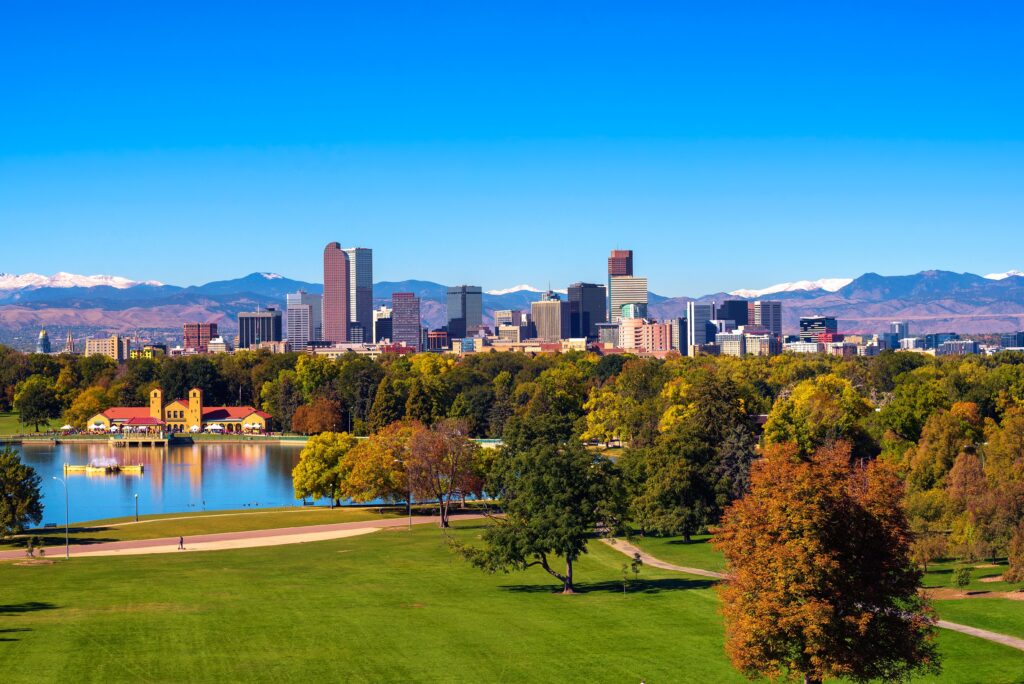
Sitting exactly one mile above sea level, Denver — the “Mile High City” — is Colorado’s vibrant capital and cultural hub. Backed by the distant Rocky Mountains and bathed in over 300 days of sunshine each year, Denver blends urban sophistication with rugged frontier charm.
Downtown Denver hums with creativity and energy. The Denver Art Museum, renowned for its bold architecture and Indigenous collections, anchors the city’s artistic core, while the nearby RiNo (River North) Art District overflows with murals, galleries, and craft breweries. Union Station, beautifully restored, is both a transit hub and a social gathering place, housing boutiques, restaurants, and the historic Crawford Hotel.
Nature is never far away — the Rocky Mountain foothills lie less than an hour’s drive from the city. Locals embrace an outdoor lifestyle, cycling along the Cherry Creek Trail, skiing on weekends, or heading to Red Rocks Amphitheatre for open-air concerts among colossal sandstone formations.
Denver’s atmosphere is one of youthful optimism and mountain spirit — a modern city forever looking toward the peaks.
Boulder

Nestled at the base of the Flatirons, those dramatic, slanted slabs of sandstone rising above the plains, Boulder is where natural beauty and progressive culture harmonize perfectly.
Known for its outdoorsy lifestyle, Boulder is a paradise for hikers, cyclists, and climbers. Trails like the Chautauqua Park Trailhead lead directly from the edge of town into the foothills, offering panoramic views of the Rockies. Yet Boulder is as much a cultural haven as a natural one. The University of Colorado Boulder brings youthful energy, while Pearl Street Mall brims with cafes, bookstores, and street performers.
Sustainability and wellness define local life — from organic markets to yoga studios and eco-friendly architecture. Meanwhile, events like the Boulder Creek Festival and the Colorado Shakespeare Festival reflect the city’s creative side.
Boulder is both refuge and inspiration — a community that has mastered the balance between intellect and wilderness, ambition and serenity.
Colorado Springs
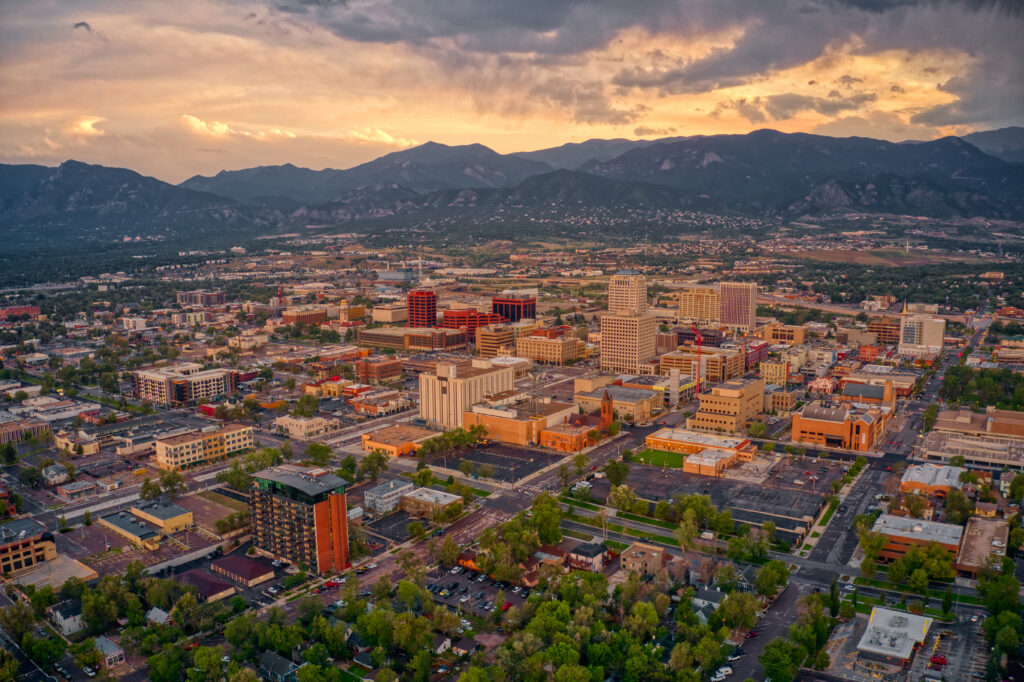
Framed by Pikes Peak, one of America’s most famous “fourteeners,” Colorado Springs combines military history, natural beauty, and spiritual awe. The city has long drawn those seeking inspiration — from early pioneers to poets like Katharine Lee Bates, who wrote “America the Beautiful” after standing atop Pikes Peak.
Visitors can drive or take the Pikes Peak Cog Railway to the summit, where endless horizons stretch across the plains and peaks. Below, Garden of the Gods offers another spectacle — red sandstone monoliths rising dramatically against snowy mountains.
The city itself is home to the U.S. Air Force Academy, whose striking modernist chapel stands as an icon of both architecture and faith. Nearby, Manitou Springs invites exploration with its mineral waters, quirky shops, and artistic spirit.
Colorado Springs embodies Colorado’s blend of strength and beauty — a meeting point of nature, heritage, and inspiration.
Rocky Mountain National Park

At the heart of Colorado’s wilderness stands Rocky Mountain National Park, a place of breathtaking grandeur and untamed wonder. Spanning over 400 square miles, it’s a land of alpine meadows, glacial lakes, and some of the highest paved roads in North America.
The park’s crown jewel, Trail Ridge Road, climbs to over 12,000 feet, crossing tundra landscapes where elk graze and marmots sun themselves among wildflowers. Iconic trails like Emerald Lake, Bear Lake, and Longs Peak invite hikers of every level to experience Colorado’s high-country majesty.
In winter, snowshoeing and cross-country skiing transform the park into a peaceful white world. In summer, the valleys come alive with wildflowers and rushing streams.
More than a park, Rocky Mountain is a symbol of Colorado’s soul — wild, resilient, and endlessly inspiring.
Garden of the Gods
Few places rival the surreal beauty of Garden of the Gods, a registered National Natural Landmark located near Colorado Springs. Towering red rock formations pierce the sky, their jagged silhouettes perfectly framing the distant snowcapped peak of Pikes Peak.
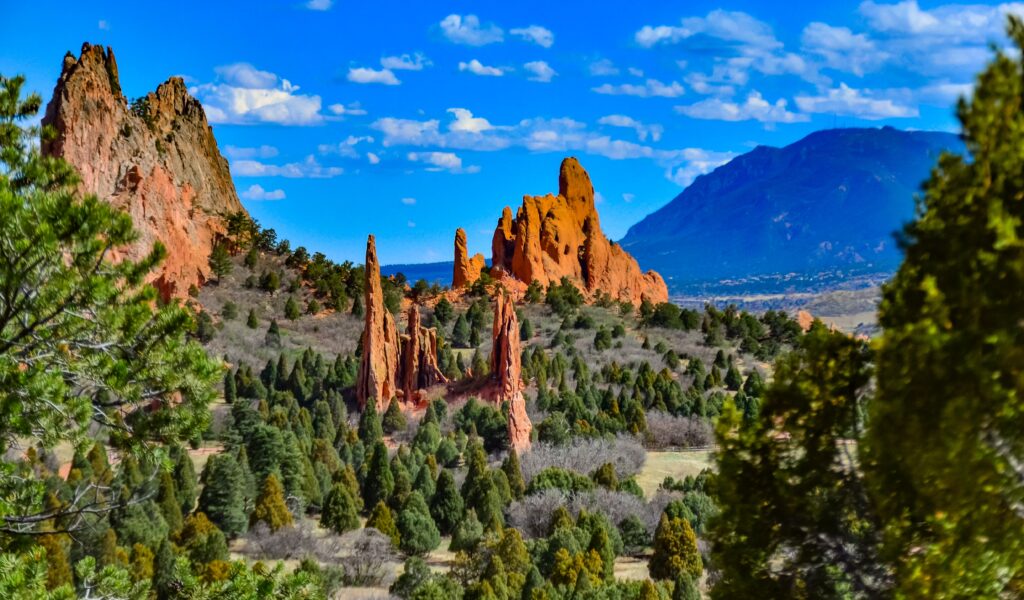
The park’s otherworldly geology was shaped over millions of years by powerful natural forces. Today, visitors can explore its winding trails, climb its sandstone towers, or simply admire the play of sunlight on crimson cliffs.
Beyond its visual drama, Garden of the Gods holds spiritual significance — its name reflects the awe it inspired in early explorers. Wildlife thrives here, from mule deer to golden eagles, and the visitor center offers insight into the area’s geology and cultural history.
Accessible and awe-inspiring, Garden of the Gods feels like stepping into a living cathedral carved by the earth itself.
Aspen
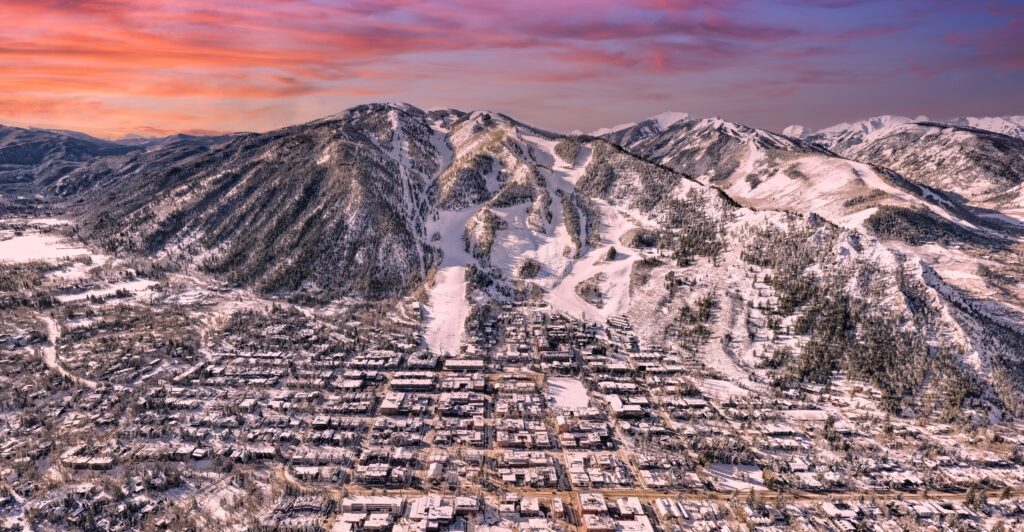
Known around the world for luxury and leisure, Aspen is far more than a glamorous ski resort — it’s a place where natural beauty, creativity, and culture intertwine effortlessly. Nestled high in the Elk Mountains, Aspen was once a 19th-century silver-mining town before reinventing itself as a haven for artists, thinkers, and lovers of the outdoors.
In winter, its four ski areas — Aspen Mountain, Snowmass, Buttermilk, and Aspen Highlands — offer some of the finest slopes in North America. In summer, the town blooms with life: hikers traverse alpine meadows, cyclists tackle mountain passes, and visitors flock to the Aspen Music Festival, which draws world-class performers to its open-air stages.
Downtown Aspen balances rustic charm with sophistication — boutique shops, art galleries, and historic buildings line its streets, all framed by peaks that glow gold at sunset. Whether you’re skiing fresh powder or attending a late-night jazz concert, Aspen captures the rare magic of a place where elegance meets wilderness.
Vail
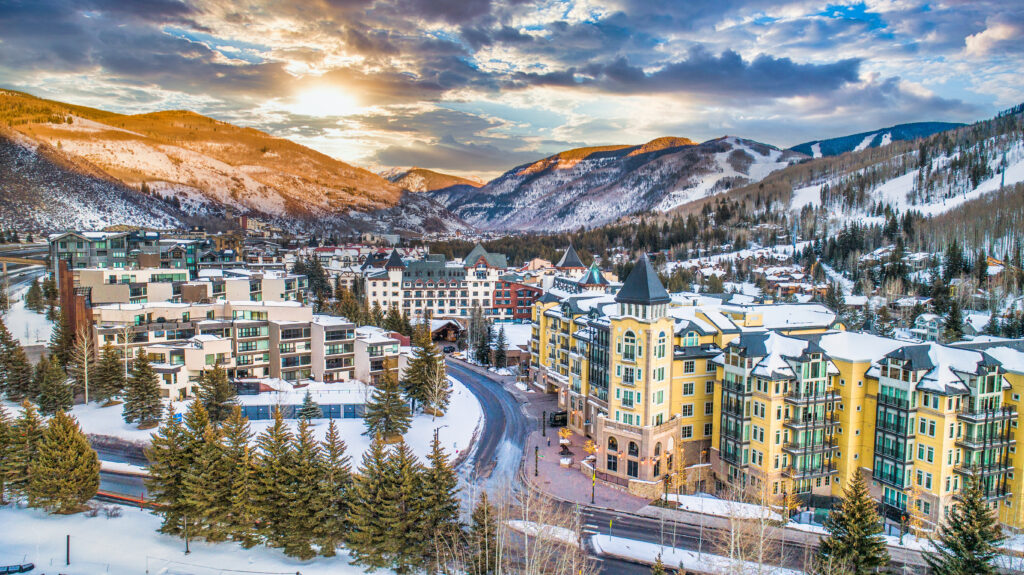
Created in the 1960s as a purpose-built ski resort, Vail has grown into one of the most beloved mountain destinations in America. Its alpine-style village, complete with cobbled lanes and flower-filled balconies, evokes the charm of the European Alps while remaining distinctly Coloradan.
Winter brings world-class skiing across 5,300 acres of terrain, from gentle groomed runs to the legendary Back Bowls. Yet Vail’s appeal endures year-round. In summer, mountain trails transform into a playground for hikers and bikers, while rivers nearby invite whitewater rafting and fly-fishing.
The town also thrives as a cultural center, hosting the Vail Dance Festival, Bravo! Vail Music Festival, and numerous art and food events. Fine dining and boutique shopping complete the experience, all surrounded by soaring peaks and pine-scented air.
Vail embodies the modern mountain ideal — luxurious, lively, and deeply in tune with the landscape that sustains it.
Breckenridge
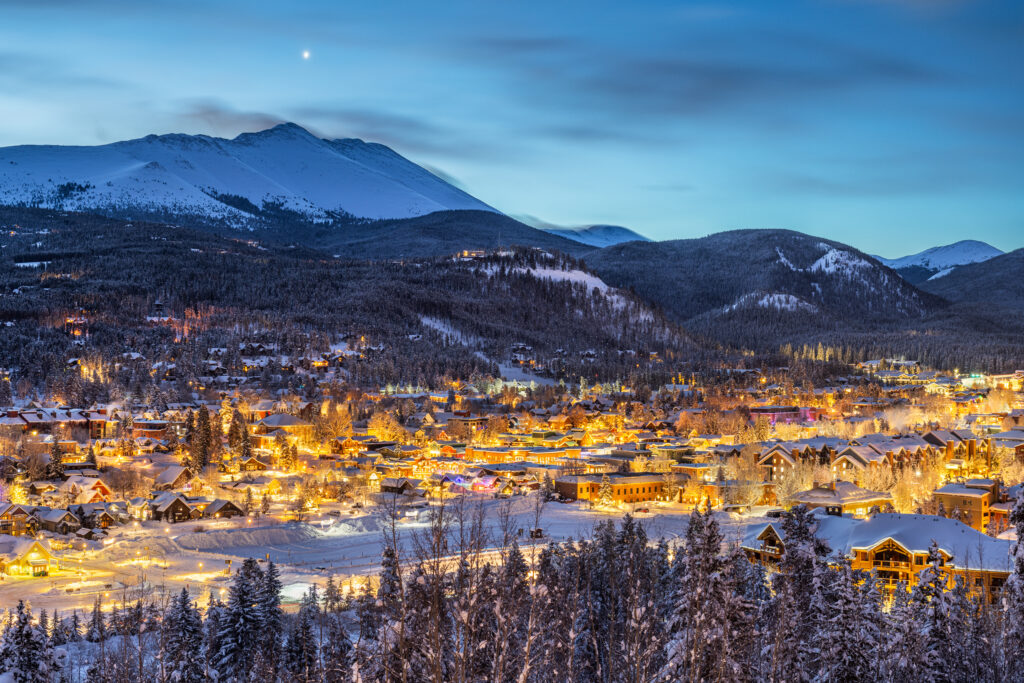
Once a rough-and-tumble mining settlement, Breckenridge has reinvented itself as one of Colorado’s most welcoming and spirited mountain towns. Nestled beneath the Tenmile Range, it retains its frontier charm with colorful 19th-century buildings now housing cafes, galleries, and craft breweries.
Breckenridge Ski Resort is renowned for its diverse terrain, but the town’s energy extends far beyond the slopes. In summer, wildflowers carpet alpine meadows, and hikers explore trails to Mohawk Lakes or along Boreas Pass. The Blue River runs through town, offering fly-fishing and riverside strolls.
Breckenridge is also known for its vibrant community life — from the International Snow Sculpture Championships in winter to art walks and music festivals in warmer months. Despite its popularity, it never loses its authenticity or warmth.
Breckenridge feels alive — a place where history, adventure, and a laid-back mountain spirit coexist perfectly.
Estes Park
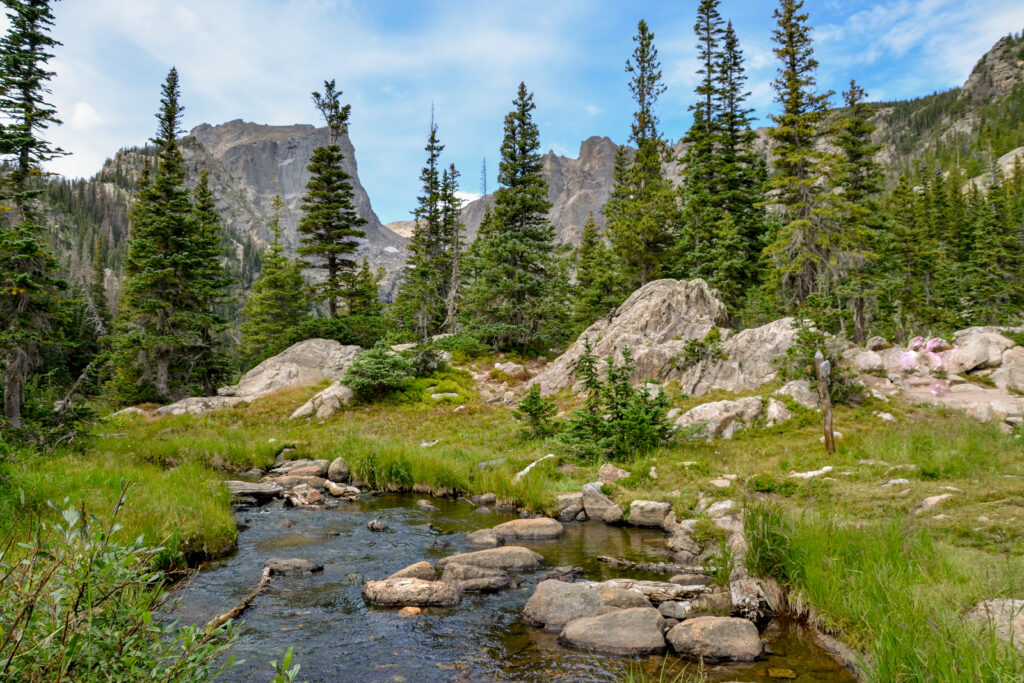
Perched at the eastern gateway to Rocky Mountain National Park, Estes Park is a quintessential Colorado mountain town — charming, scenic, and steeped in outdoor adventure. Its setting, surrounded by peaks and mirrored lakes, makes it an ideal base for exploring one of America’s most beloved wilderness areas.
Downtown Estes Park offers cozy lodges, local craft shops, and classic mountain eateries. The town’s iconic Stanley Hotel, built in 1909, inspired Stephen King’s The Shining and remains a grand, slightly mysterious landmark.
Elk wander freely through the streets, especially in autumn, when their haunting calls echo through the valley. Hiking, horseback riding, and rock climbing are everyday pursuits, while the nearby Trail Ridge Road provides some of the most breathtaking alpine drives in the country.
Estes Park is both peaceful and exhilarating — a mountain town that feels like the threshold to the wild heart of Colorado.
Telluride
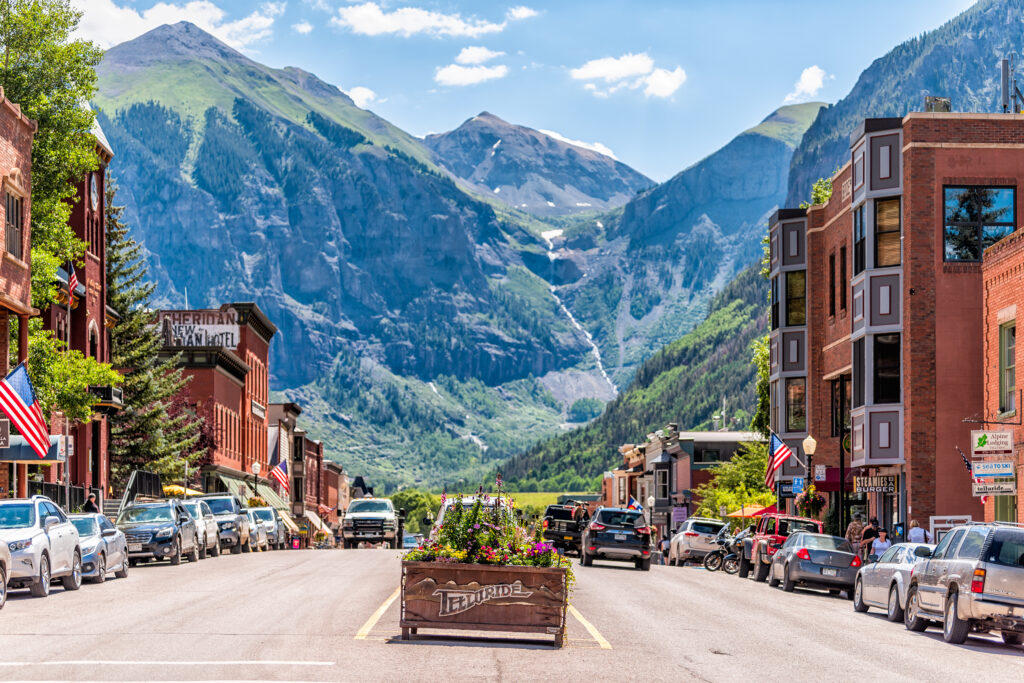
Tucked deep within a box canyon in the San Juan Mountains, Telluride is often called one of the most beautiful towns in America — and with good reason. Towering cliffs rise on all sides, waterfalls cascade from great heights, and Victorian-era buildings line its storybook streets.
Once a remote mining outpost, Telluride has evolved into a cultural and outdoor paradise. Its ski resort is world-class, but summer might be even more magical — with the Telluride Film Festival, Bluegrass Festival, and countless outdoor concerts filling the air with music and laughter.
A free gondola connects the historic town to Mountain Village, offering stunning aerial views with every ride.
Telluride’s magic lies in its balance: between rugged wilderness and refined culture, between history and vitality. It’s a place where time slows, the mountains feel eternal, and every sunset paints the cliffs in gold.
Durango
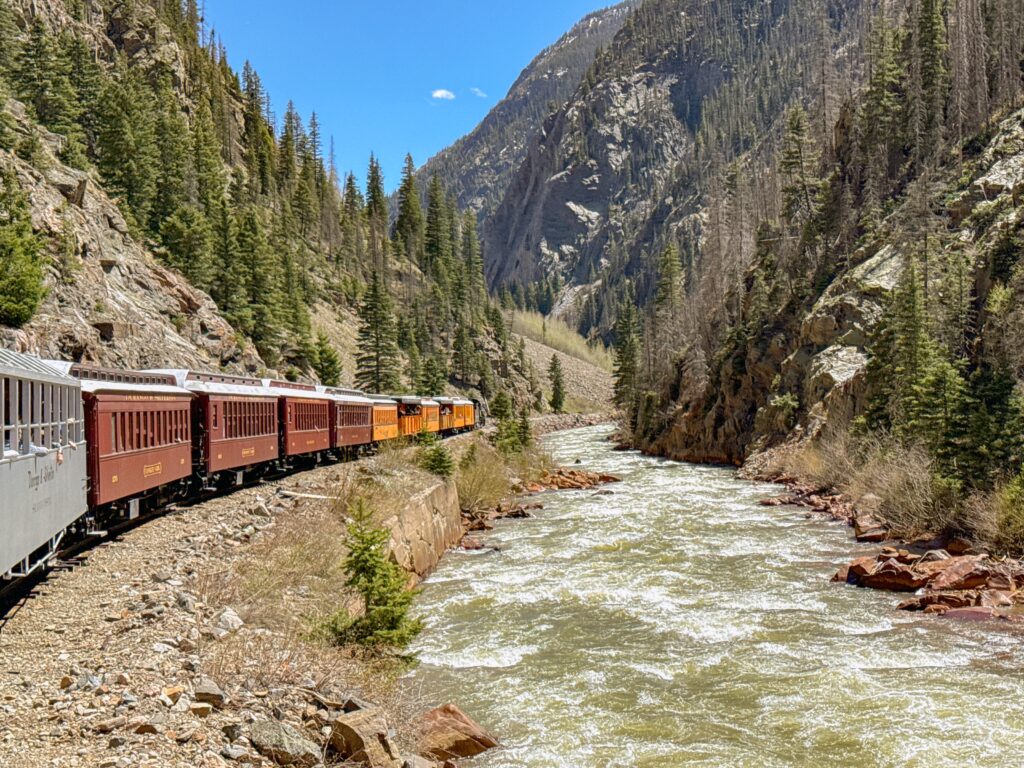
Nestled in the Animas River Valley, Durango captures the enduring spirit of the Old West, yet hums with youthful adventure. Founded in 1880 as a railroad town, Durango retains its frontier charm through red-brick streets, historic saloons, and the whistle of its legendary Durango & Silverton Narrow Gauge Railroad — a vintage steam train that winds through mountain canyons and over perilous bridges.
Today, Durango is a thriving hub for outdoor lovers. The Animas River Trail cuts through town, offering serene walks and kayaking spots, while nearby mountains beckon hikers, bikers, and skiers. In winter, Purgatory Resort offers family-friendly skiing with sweeping alpine views.
Beyond adventure, Durango is a cultural crossroads — home to the Southern Ute Museum, vibrant art galleries, and farm-to-table restaurants showcasing local flavors.
Durango feels like the heartbeat of the Southwest — a blend of rail history, mountain freedom, and the unhurried rhythm of a town that still remembers its roots.
Silverton

High in the San Juan Mountains at over 9,000 feet, Silverton feels like a living time capsule. Once a bustling mining boomtown, it now survives as one of Colorado’s most atmospheric destinations — remote, dramatic, and steeped in history.
The town’s main street, lined with colorful wooden storefronts, seems unchanged since the 1880s. In summer, the Durango & Silverton train arrives daily, puffing steam into the thin mountain air, bringing visitors eager to explore this rugged outpost.
Surrounded by towering peaks and alpine basins, Silverton is a haven for hikers, Jeep enthusiasts, and backcountry skiers. The surrounding San Juan Mountains offer some of the most challenging and beautiful terrain in Colorado, from wildflower meadows to ghost towns lost to time.
When winter snows blanket the town, Silverton transforms into an adventurer’s dream — quiet, extreme, and hauntingly beautiful. It’s a place where the past still whispers through every clapboard and gust of mountain wind.
Ouray
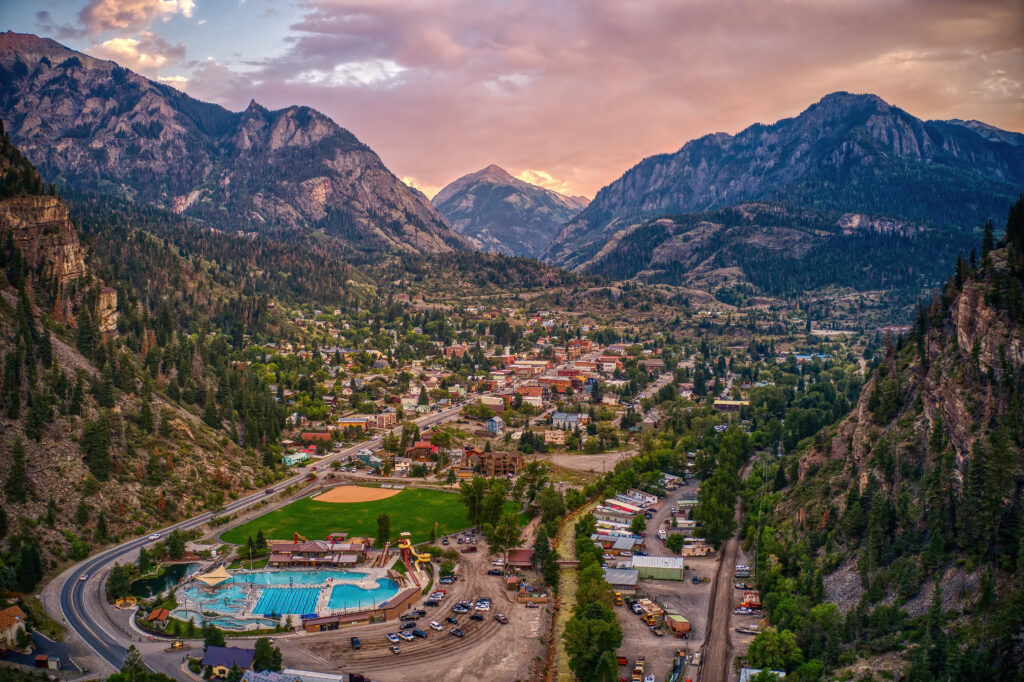
Cradled in a steep valley and surrounded by 13,000-foot peaks, Ouray is often called the “Switzerland of America.” Its breathtaking scenery, cascading waterfalls, and charming Victorian streets make it one of Colorado’s most picturesque mountain towns.
Hot springs bubble beneath the town, feeding the Ouray Hot Springs Pool, where visitors can soak while gazing at snowy peaks. Nearby, the Box Canyon Falls Park showcases a roaring waterfall plunging into a narrow gorge — a natural cathedral of stone and mist.
Outdoor lovers find endless trails for hiking and off-roading, including the legendary Million Dollar Highway, one of the most scenic drives in America. In winter, Ouray becomes the world’s ice-climbing capital, drawing climbers to its frozen waterfalls.
Despite its grandeur, Ouray remains small, friendly, and unpretentious — a mountain jewel polished by time and nature.
Crested Butte

Known as “the last great Colorado ski town,” Crested Butte blends old mining heritage with an authentic mountain-town atmosphere that resists over-commercialization.
Surrounded by meadows that explode with wildflowers in summer, Crested Butte transforms into a kaleidoscope of color — celebrated each July during the Crested Butte Wildflower Festival. In winter, Crested Butte Mountain Resort offers world-class skiing without the crowds or pretense of bigger resorts.
The historic downtown is lined with brightly painted wooden buildings, boutique shops, and laid-back cafes. Mountain biking is practically a religion here — many consider Crested Butte the sport’s birthplace in Colorado.
Above all, Crested Butte feels genuine — a place that lives by the seasons, cherishes its natural beauty, and welcomes travelers who seek something real and unspoiled.
Glenwood Springs
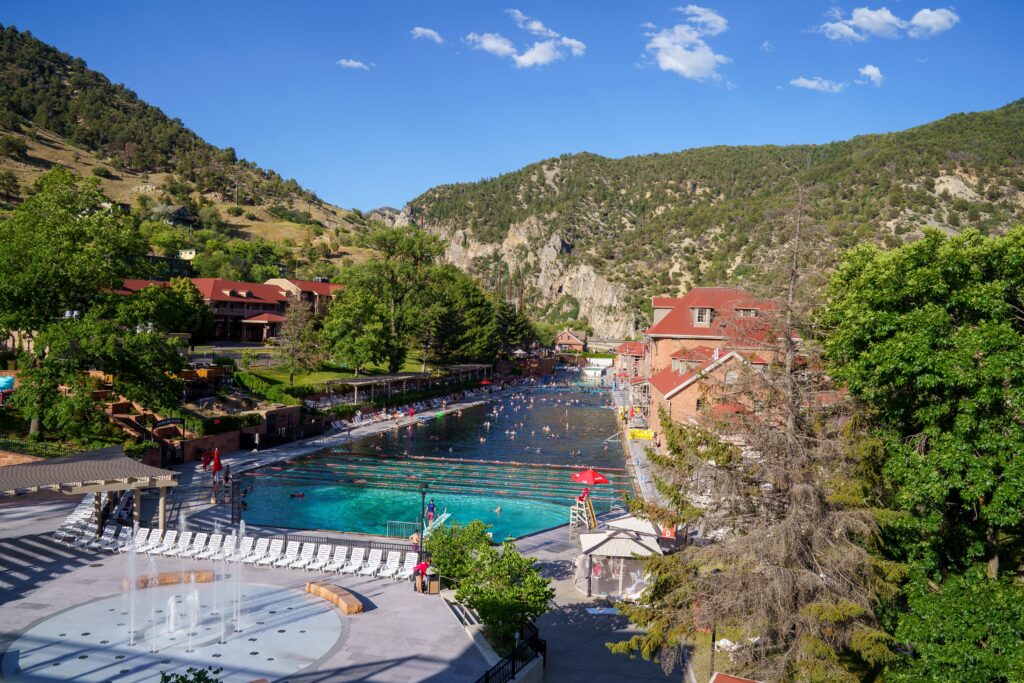
Where the Roaring Fork and Colorado Rivers meet lies Glenwood Springs, a town famous for its healing waters and outdoor adventure. Since the late 19th century, visitors have flocked here to soak in the Glenwood Hot Springs Pool, one of the largest natural hot springs in the world.
Overlooking the valley, the Glenwood Caverns Adventure Park invites guests into a network of limestone caves — or onto adrenaline-pumping rides that hang over sheer cliffs. For hikers, nearby Hanging Lake offers one of Colorado’s most breathtaking short trails, leading to a turquoise lake suspended in a mossy canyon.
The town’s historic Hotel Colorado hosted presidents and pioneers, while modern restaurants and breweries keep the town lively.
Glenwood Springs is Colorado in miniature — a place of mountains, rivers, healing waters, and endless joy in the great outdoors.
Great Sand Dunes National Park
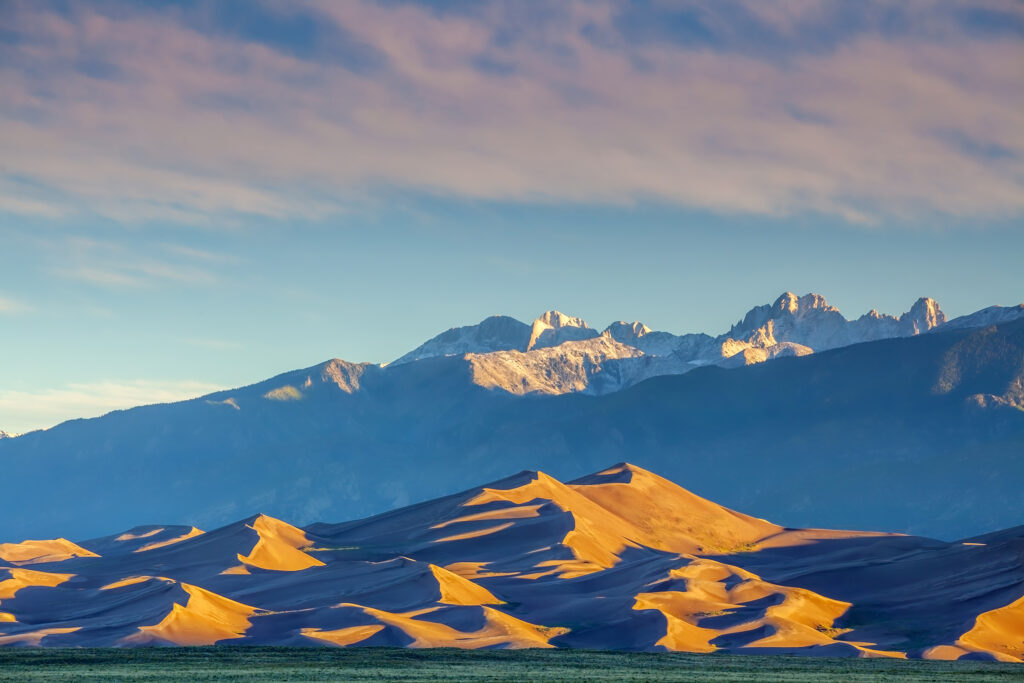
In southern Colorado, where the Sangre de Cristo Mountains tower over the San Luis Valley, lies one of the state’s most surreal landscapes — Great Sand Dunes National Park. Here, winds have sculpted the tallest sand dunes in North America, some reaching over 750 feet high, rising dramatically against a backdrop of snow-covered peaks.
The dunes shift and shimmer with every gust of wind, creating a living sculpture of shadow and light. Adventurers climb the ridges to watch the sunset paint the mountains pink and gold, or slide down the slopes on sandboards. In spring, Medano Creek flows at the base of the dunes, forming a temporary beach where children splash and play.
By night, the park transforms into one of the best stargazing sites in the country, designated an International Dark Sky Park. With no city lights for miles, the Milky Way spills across the heavens like powdered silver.
The Great Sand Dunes defy expectation — a desert hidden within mountains, a symbol of time, wind, and endurance.
Alamosa
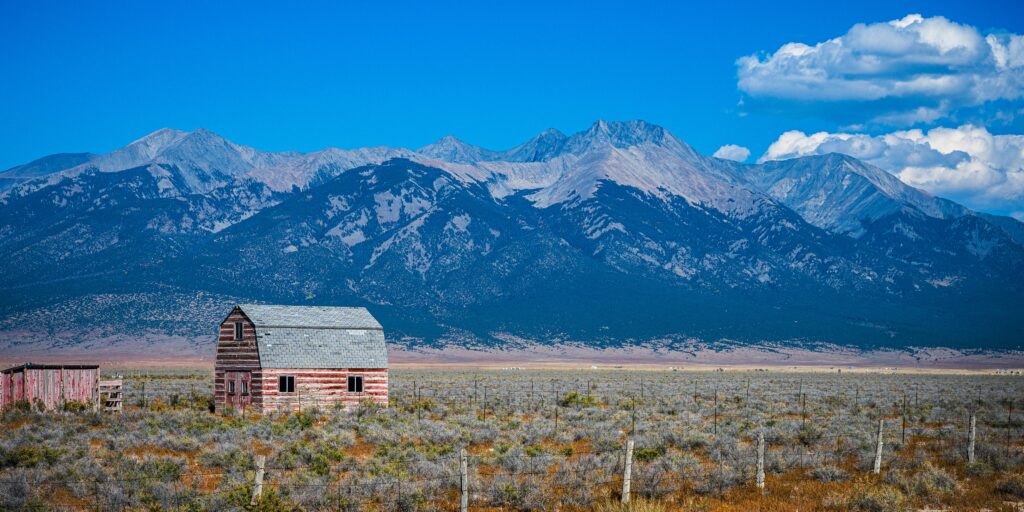
Just thirty minutes from the dunes, Alamosa serves as the friendly gateway to the San Luis Valley — a high desert plateau framed by mountain ranges and steeped in history. Founded as a railroad town, Alamosa today blends small-town warmth with easy access to some of Colorado’s most unusual landscapes.
The Rio Grande flows through the city, inviting kayaking and fishing, while wildlife lovers head to the nearby Alamosa National Wildlife Refuge to spot migratory birds and elk. In autumn, the Monte Vista Crane Festival celebrates the arrival of thousands of majestic sandhill cranes.
Alamosa’s downtown retains a frontier feel, with murals, diners, and historic architecture that echo its 19th-century roots. The town also makes a perfect base for exploring the Cumbres & Toltec Scenic Railroad or the mystical Zapata Falls, where a hidden waterfall cascades inside a narrow, icy canyon.
Alamosa feels like the soul of southern Colorado — quiet, authentic, and touched by vast skies and deep history.
Salida

Set along the Arkansas River and surrounded by the towering Sawatch Range, Salida radiates creative energy and outdoor charm in equal measure. Once a mining supply town, it has evolved into one of Colorado’s most beloved art and adventure hubs.
The Historic Downtown Salida District buzzes with galleries, studios, and cafes housed in 19th-century brick buildings. Artists, kayakers, and free spirits coexist here, drawn by the town’s balance of beauty and authenticity. The river that flows through town provides world-class whitewater rafting, while surrounding trails and peaks invite hiking and mountain biking.
In winter, Monarch Mountain offers skiing without the crowds, and the local Salida Hot Springs provide a relaxing retreat after a day outdoors. Festivals, live music, and an easygoing pace make Salida irresistible year-round.
It’s a town where nature meets creativity — a reminder that the wild and the artistic share the same heartbeat.
Leadville

At 10,152 feet, Leadville is the highest incorporated city in North America — and one of Colorado’s most storied. Once one of the richest mining towns in the Old West, it was home to silver barons, saloon keepers, and legends like Doc Holliday and the Unsinkable Molly Brown.
The past lingers in the town’s ornate Victorian buildings, historic opera house, and the National Mining Hall of Fame and Museum, which tells the story of the boom-and-bust cycles that shaped the region.
Surrounded by Colorado’s tallest peaks, including Mount Elbert and Mount Massive, Leadville is a gateway to alpine adventure. In summer, hikers and mountain bikers traverse high-altitude trails; in winter, skiers find powdery bliss at Ski Cooper, a family-friendly gem.
Despite its altitude and rugged history, Leadville exudes warmth — a community proud of its resilience and connection to the mountains.
Buena Vista

Tucked along the Arkansas River and framed by the Collegiate Peaks, Buena Vista (Spanish for “good view”) more than lives up to its name. This tranquil town offers a mix of mountain adventure and small-town relaxation, where every direction reveals a postcard-worthy view.
The Buena Vista Whitewater Park attracts kayakers and paddleboarders, while the nearby Mount Princeton Hot Springs provide natural pools for soaking under the stars. Trails wind through pine forests and along river canyons, perfect for hikers and mountain bikers seeking solitude.
Buena Vista also shines with local charm — coffee shops, craft breweries, and art spaces that celebrate its outdoorsy soul. It’s quieter than some of Colorado’s busier destinations, yet equally captivating, offering travelers a chance to slow down and simply breathe.
Here, life moves at the rhythm of the mountains — unhurried, pure, and filled with quiet wonder.
Steamboat Springs
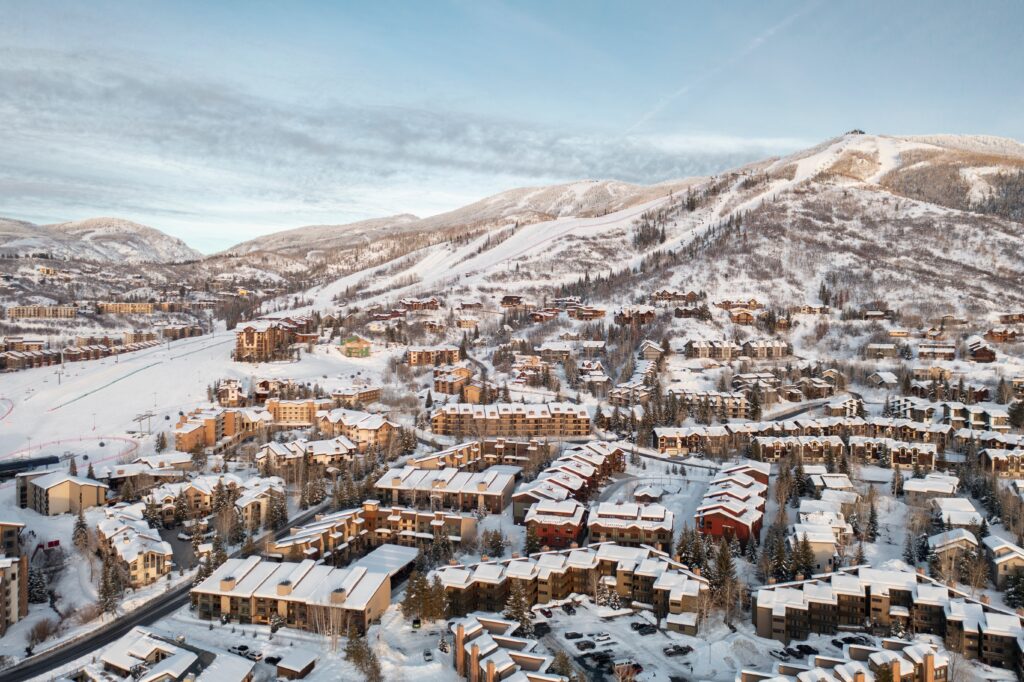
Known as “Ski Town, U.S.A.,” Steamboat Springs blends athletic spirit with laid-back Western charm. This northwestern Colorado town has produced more Olympians than any other in America — yet it feels anything but pretentious.
Steamboat’s slopes are famous for their “champagne powder” — soft, dry snow perfect for skiing and snowboarding. Off the mountain, the Old Town Hot Springs and Strawberry Park Hot Springs offer steaming pools surrounded by pine forests, ideal for unwinding after a day in the cold.
The town also celebrates its cowboy heritage with annual rodeos and the Winter Carnival, where skiers are towed behind horses down Main Street — a beloved local tradition.
In summer, the Yampa River invites tubing and kayaking, while wildflowers blanket the surrounding hills. Steamboat embodies the relaxed side of the Rockies — where athleticism, authenticity, and natural beauty meet.
Creede
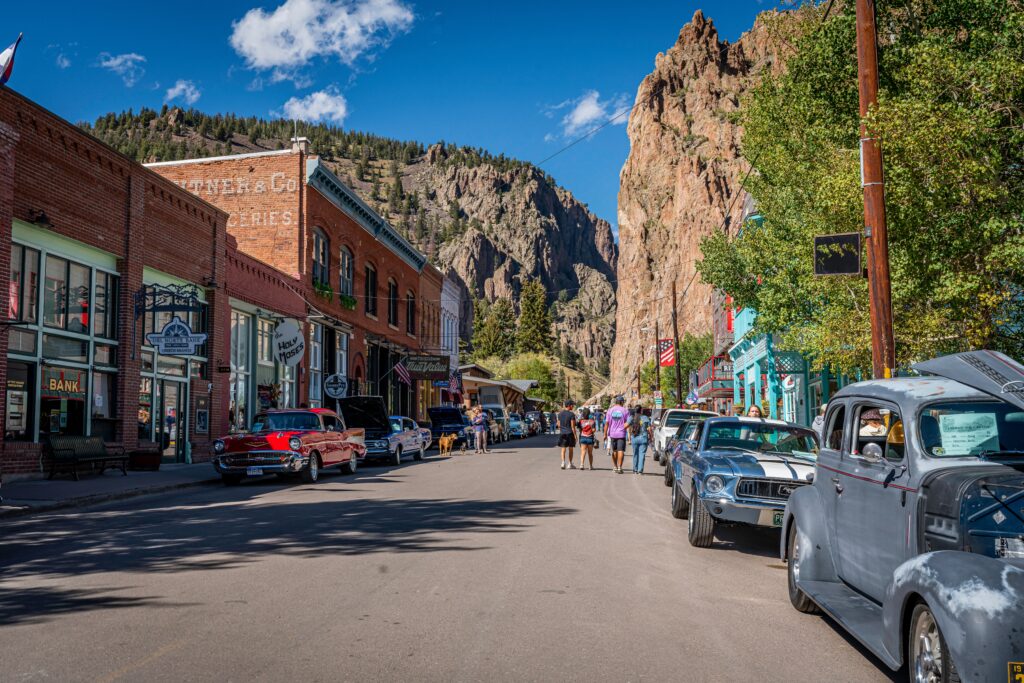
Hidden in the San Juan Mountains, Creede is a tiny town with a huge heart — a place where art, history, and wilderness converge. Once one of the rowdiest silver boomtowns in the state, Creede nearly vanished after the mines closed. Today, it thrives as a cultural gem and mountain sanctuary.
The dramatic cliffs that encircle the town form a natural amphitheater, giving Creede a setting unlike any other in Colorado. The Creede Repertory Theatre, one of the best small-town theaters in America, draws visitors from across the country for world-class performances each summer.
Nearby, the Bachelor Loop takes travelers through ghost towns and old mining sites, while hikers explore waterfalls, alpine lakes, and meadows dotted with wildflowers.
Creede may be small, but it captures Colorado’s essence — creative, courageous, and full of quiet beauty. It’s a place that reminds visitors that the wild can also be deeply human.
Black Canyon of the Gunnison National Park
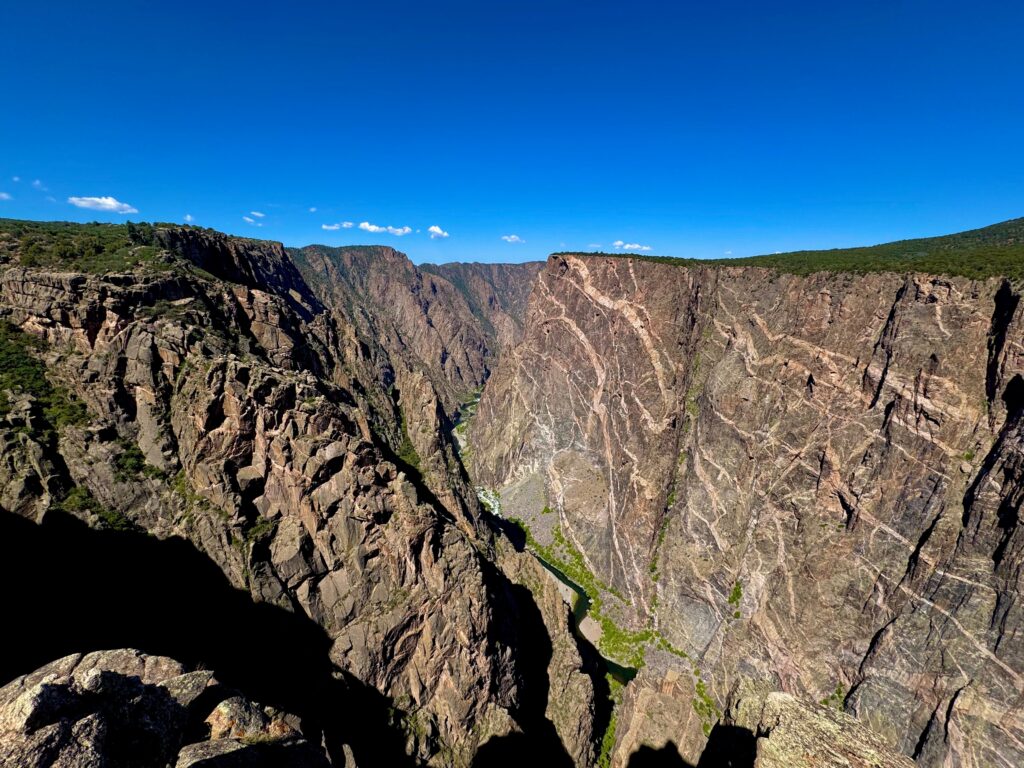
If the Grand Canyon is grand in scale, the Black Canyon of the Gunnison is grand in intensity. This narrow, sheer chasm — carved by the Gunnison River over millions of years — is one of the most dramatic landscapes in North America. Its cliffs plunge over 2,000 feet into the roaring river below, their walls so steep that sunlight only touches the depths for minutes each day, giving the canyon its name.
Standing at Painted Wall, the tallest cliff in Colorado, visitors can trace pale veins of granite that shimmer like brushstrokes — nature’s own mural. Hiking trails like Warner Point or Oak Flat Loop offer breathtaking perspectives, while experienced climbers test themselves on vertical routes few dare to attempt.
The Black Canyon is both humbling and exhilarating — a place where silence roars and the Earth’s raw power is on full display.
Mesa Verde National Park
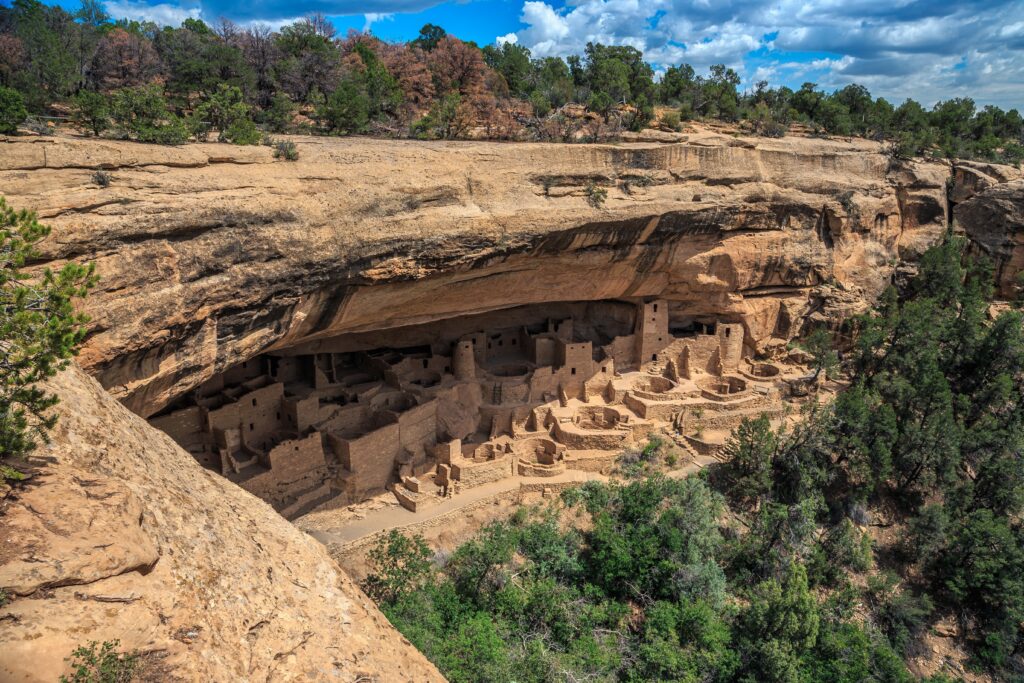
Mesa Verde, a UNESCO World Heritage Site, stands as one of the most remarkable archaeological treasures in the United States. Over 800 years ago, the Ancestral Puebloans built intricate cliff dwellings within the sandstone alcoves of this high plateau — homes, kivas, and villages suspended between earth and sky.
The most famous of these is Cliff Palace, an astonishing complex of over 150 rooms and ceremonial spaces, accessible only by guided tours. Walking through these ancient corridors is like stepping through time — a quiet dialogue with the past.
Beyond the ruins, the mesa’s landscape glows with sage, juniper, and endless horizons. The park invites reflection as much as exploration, reminding visitors of a civilization that lived in harmony with its land.
Mesa Verde is not just a national park; it is a sacred encounter — a place that whispers stories older than memory.
Pagosa Springs
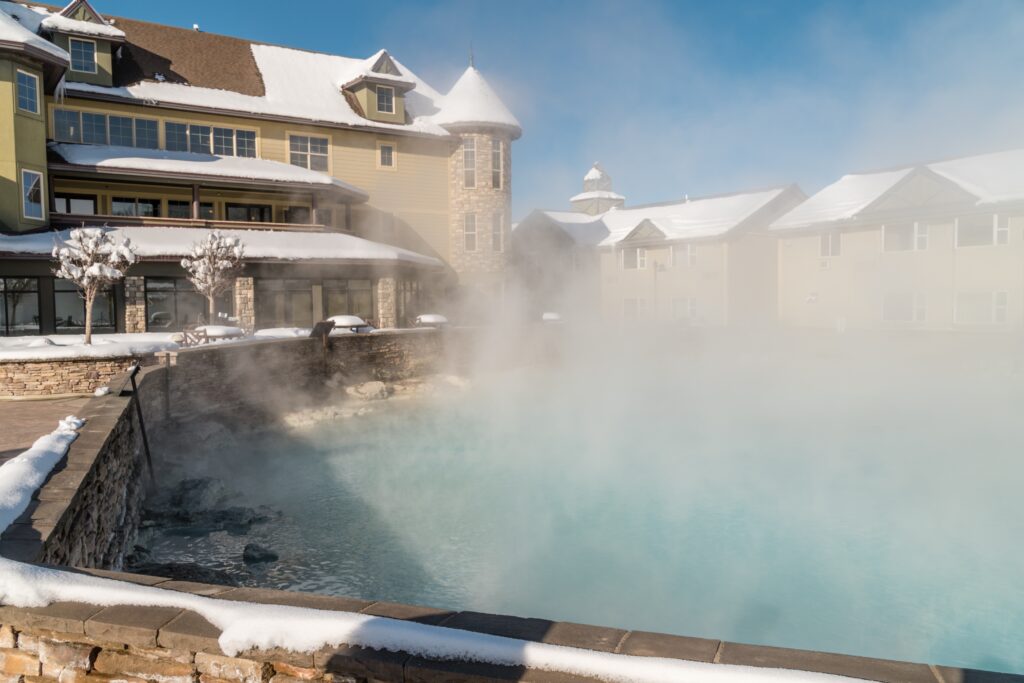
Tucked in a lush valley along the San Juan River, Pagosa Springs is named for its most famous feature — the world’s deepest geothermal hot spring. For centuries, its steamy waters have drawn people seeking healing and tranquility, from Indigenous tribes to modern travelers.
Today, the town’s riverside resorts and bathhouses make soaking beneath mountain skies an unforgettable experience. The combination of mineral-rich waters, pine-scented air, and snow-dusted peaks creates a sense of serenity that defines Pagosa’s charm.
But the town offers more than relaxation. Nearby trails lead to Treasure Falls, a 100-foot waterfall framed by mist and moss, while the Wolf Creek Ski Area boasts some of Colorado’s best powder. Pagosa Springs is the perfect blend of rejuvenation and adventure — a place where nature soothes both body and spirit.
Gunnison
Named after the explorer John W. Gunnison, this high-mountain town is a gateway to wide-open landscapes and rugged beauty. Set along the Gunnison River, the town retains an authentic Western feel — unhurried, friendly, and deeply connected to the land.

Nearby Blue Mesa Reservoir, Colorado’s largest body of water, glimmers under vast skies, offering fishing, kayaking, and scenic solitude. The surrounding Curecanti National Recreation Area and Gunnison National Forest invite endless exploration — from alpine lakes to wildflower meadows and high passes.
Each summer, Western Colorado University brings a burst of youthful energy, blending academia and adventure. In winter, snow blankets the town, and skiers head to nearby Crested Butte for world-class runs.
Gunnison embodies the quieter side of Colorado — a place where the wilderness still feels infinite and the stars impossibly close.

